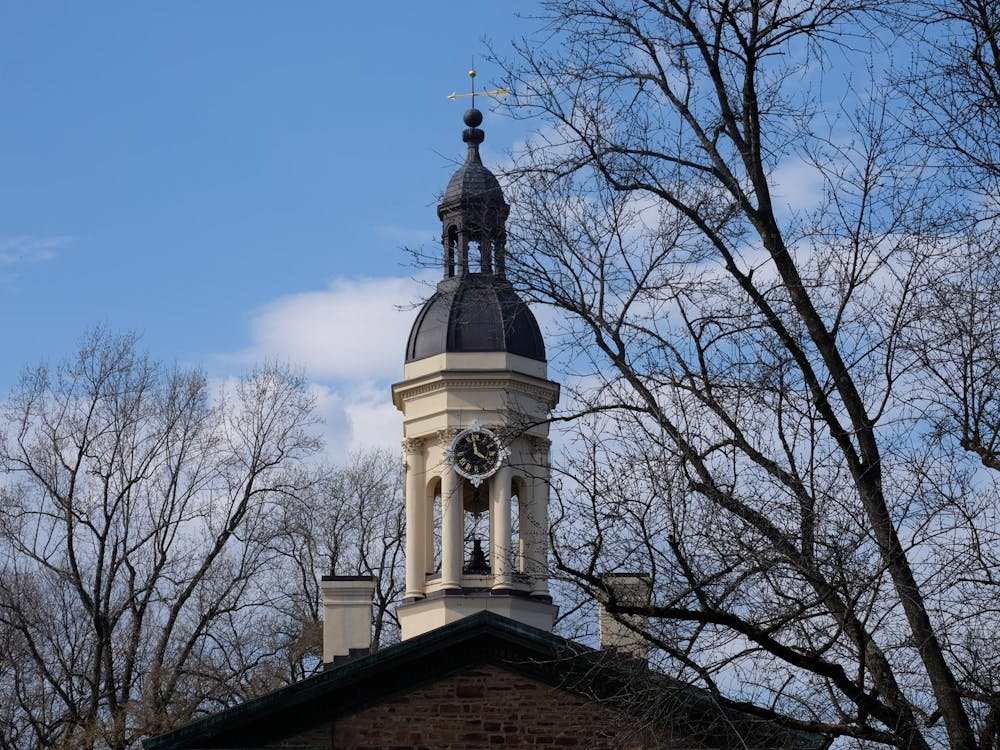From 1986 to 2006, Ben Baldanza GS ’86 worked at multiple airlines on turnaround projects, such as taking US Airways through bankruptcy proceedings.
“That wasn’t so great, but you learn a lot,” he said in a talk to the Entrepreneurship Club about his turnaround of low-cost Spirit Airlines and his take on the current state of the airline industry in the United States. Baldanza has spent roughly 30 years in the airline industry, and it is this experience that has enabled him to pilot airline companies through turbulent times.
Baldanza was the CEO of Spirit Airlines from 2006 to 2016 and helped make the airline profitable after years of consecutive losses in the early 2000s. Prior to joining Spirit Airlines, Baldanza was an executive at American Airlines, Northwest Airlines, Continental Airlines, US Airways, and TACA Airlines in Central America. Currently, he teaches a course on airline economics at George Mason University and is a Managing Member for Diemacher, LLC.
Baldanza began his talk describing his first foray into the transportation field, which was an internship at Amtrak in Washington D.C. He spent a semester working at Amtrak, and he noted that he enjoyed the complexity of the industry as a whole.
“There’s big government interests, there’s big capital, you have to buy expensive equipment,” Baldanza said. “It just seemed to me like there were a lot of things you could do that would be interesting.”
After graduating from Syracuse University with a degree in economics, Baldanza joined the Wilson School’s MPA program. He noted that the Wilson School allowed him to craft a transportation policy focus because the program was not overly structured. He took both economics and transportation policy courses and joined American Airlines upon his graduation in 1986.
“It was a really great place to work, there were a lot of smart people,” Baldanza said about American Airlines. He added that following the airline industry deregulation of the late 1970s, American Airlines pioneered frequent flyer programs and computerized reservation systems, which are still in use today.
Baldanza was hired by Spirit Airlines in 2005, then a struggling airline that had recently been bought by a private equity group. In order to turn the company around, Baldanza and the Spirit leadership team analyzed the financial data of all the airlines in the world and plotted the product quality of the airline versus the ticket price of the airline. They found that most of the airlines offer a medium product at a medium price, but these airlines had lost money in 20 out of the last 30 years.
“They made a lot of money in good years, but gave it all back and more,” Baldanza said. “By the end of 2014, the US airline industry since Orville and Wilbur [Wright] had been a net loss industry.”
In contrast, he noted that the analysis showed that there were two classes of airlines that were profitable in 27 or more of the past 30 years. One class was the higher quality/higher price airlines, like Emirates Airlines and Singapore Airlines. The other class was the lower quality/lower price airlines, like Southwest Airlines in the 1980s and Ryanair in Europe. Baldanza noted that the only airlines that made money “didn’t try to offer everything to everyone.”
In 2006, Baldanza explained that there were few airlines fighting for the lower quality/lower price segment in the United States, so he and the leadership team at Spirit Airlines decided to reshape the airline to serve this market.
“We’re going to compete for customers on the basis of price, rather than on the basis of a physical product,” he said. “We saw ourselves as fitting the world where price and product were the same thing.”

To accomplish this, Baldanza worked to cut costs at the company and started to “unbundle” fares. For example, since not everyone checked bags, the airline would charge more money to those who checked bags. As a testament to this approach, Baldanza noted that when oil prices skyrocketed to around $140 a barrel in 2008, the US airline industry lost $10 billion, but Spirit Airlines made a profit of $100 million.
“We said, ‘We’ve got to figure out how to keep this company profitable at high energy prices,’” he explained. “We shrunk the airline by 20 percent; we returned seven airplanes to a lessor prematurely.”
Baldanza noted that in hindsight, Spirit Airlines acted much faster than the rest of the US airline industry, which reduced Spirit’s losses. In addition, Spirit had a higher number of seats on its planes, so the fuel price per seat was lower than that of its competitors. This statistic enabled Spirit to increase its fare by a lower amount than its competitors.
Baldanza said that as CEO, he worked to hire people who not only were good at their job, but also believed in the mission of the company. This second facet was especially challenging, since Baldanza noted that Spirit was portrayed unfavorably by the media. In addition, he noted that while there are numerous statistics that leaders can use to evaluate their businesses, they have to figure out which statistics are useful to measure so they are not overwhelmed by data.
“We defined the business in a very quantitative way,” he explained. “We were very relentless about the regular ongoing measurement of, ‘Are we doing better?’”
Baldanza's talk, titled “An Unconventional Spirit of Entrepreneurship,” occurred at the Entrepreneurial Hub at 6:30 p.m. and was hosted by the Entrepreneurship Club.







